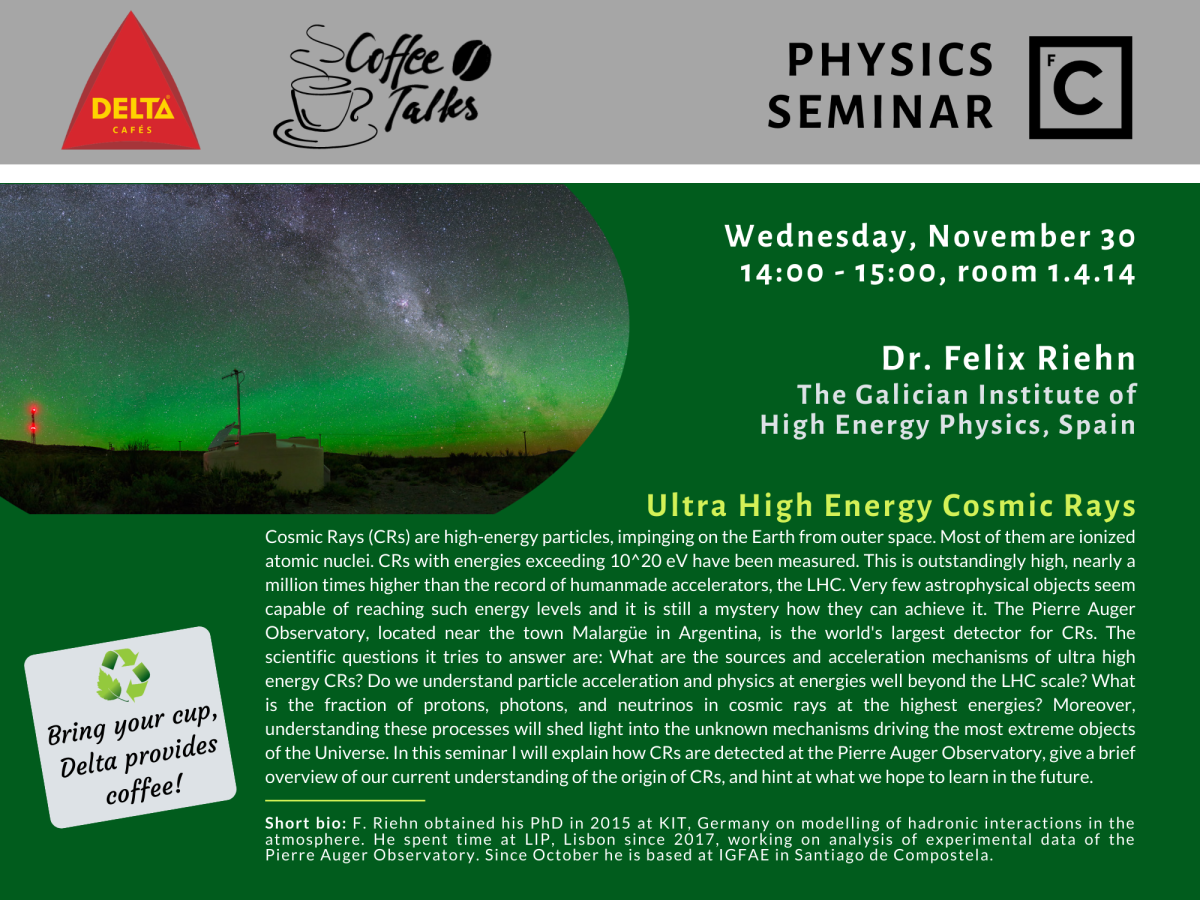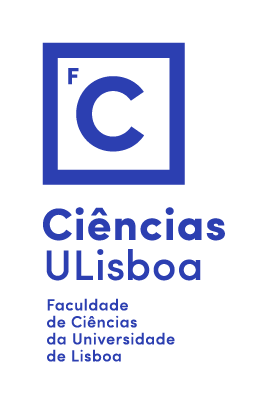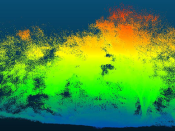Por Felix Riehn (The Galician Inst. of High Energy Physics, Spain).
Cosmic Rays (CRs) are high-energy particles, impinging on the Earth from outer space. Most of them are ionized atomic nuclei. CRs with energies exceeding 10^20 eV have been measured. This is outstandingly high, nearly a million times higher than the record of human-made accelerators, the LHC. Very few astrophysical objects seem capable of reaching such energy levels and it is still a mystery how they can achieve it. The Pierre Auger Observatory, located near the town Malargüe in Argentina, is the world's largest detector for CRs. The scientific questions it tries to answer are: What are the sources and acceleration mechanisms of ultra high energy CRs? Do we understand particle acceleration and physics at energies well beyond the LHC scale? What is the fraction of protons, photons, and neutrinos in cosmic rays at the highest energies? Moreover, understanding these processes will shed light into the unknown mechanisms driving the most extreme objects of the Universe. In this seminar I will explain how CRs are detected at the Pierre Auger Observatory, give a brief overview of our current understanding of the origin of CRs, and hint at what we hope to learn in the future.
Short bio: F. Riehn obtained his PhD in 2015 at KIT, Germany on modelling of hadronic interactions in the atmosphere. He spent time at LIP, Lisbon since 2017, working on analysis of experimental data of the Pierre Auger Observatory. Since October he is based at IGFAE in Santiago de Compostela.









